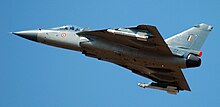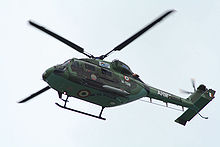The rise and rise of Made in India
7 Aug 2013 | Ramu Ramanathan | Comment now
A tiny news item caught my attention. It said, three Indian companies are in contention to print first ever standardised cheques of the National Bank of Ethiopia (NBE). The companies are Shree Nidhi Secure Printing Plc (SNSP), Madras Security Printers Plc (MSP) and Manipal Group, according to sources at the NBE.
In a bid to avoid forgery and expedite cheque clearing and settlement, the NBE, along with Ethiopian Bankers' Association (EBA), made a decision to standardise all cheques from banks across the country. This will be marked by the inclusion of security features that are hard to replicate and a technology solution, called Magnetic Ink Character Recognition (MICR).
This is the new trend. Banks, brands, governments and book publishers in Africa are eyeing India.
Likewise Middle East, where Gurgaon-based Vinsak will install their new intermittent label press. Even as Ranesh Bajaj shared that information with PrintWeek India, the news from Dubai is, Kumar Labels have announced a joint venture with Delta Group, called Delta & Kumar Labels. The new print facility will be equipped with one eight-colour flexo printing press and a range of finishing kit; housed in a 5,000 sq/ft with expansion possibilities and offset, digital, screen, and wide-format under one roof.
In the interim, on the other side of Asia, Welbound, who have notched up a healthy success rate for its PUR binders in India, is reaching out to the book industry in South East Asia. India's leading bookbinding machine manufacturer has a stall at the forthcoming 4th International Packprint International organised by Messe Dusseldorf in Bangkok. The four-day event starting on 28 August will showcase the WB PUReBind 350, a compact , quick makeready PUR perfect binder.
Manugraph and TPH in Africa
In Africa, Manugraph's Cityline Express has sold two towers + two mono units and one folder to Torad Investment in Lagos, Nigeria. Emmanuel Chollom, the managing director of the Nigerian based company,. visited the Manugraph factory in Kolhapur and said, "We were highly impressed with the factory in Kolhapur and were happy with our decision to buy a Two Tower + Two Mono Units and One Folder of the Cityline Express from Manugraph. He added, "the company's commitment to quality is phenomenal, their technology is avant-garde, the Manugraph brand name spells trust in the printing world and they are renowned for their after sales service. All these factors weighed in, when we made our decision to associate with Manugraph and we now look forward to a fruitful and fulfilling association with them in the years to come.
This is tall praise. More so, when one hears of heavy weight delegation visiting Manugraph's Kolhapur factory.
Today, Manugraph is not only India's largest producer of web off-set machines but also has a significant presence in international markets with publishers from Africa, Europe, CIS countries, South America, Middle East and Asia making a demand for Manugraph presses. The company is now the number one in single width, single circumference press manufacturing company in the world.
Similar action is transpiring at the Faridabad factory of TPH.
A leading newspaper company of West Africa has opted for a fully – automated 5-tower Orient X-Cel (36,000 cph) press of 578mm cutoff with 6 auto reel changers. The customer's objective was to have a state-of-the-art web machine at an affordable price, for starting new production centres in their country. This is boosted by the Goss machine at the main centre.
Meanwhile a large Government organisation in South East Asia has ordered another Orient X-Cel (36,000 cph) press of 578 mm. cutoff. This is a fully – featured press equipped with several automation features, consisting of three 4-Hi towers, one mono unit and a folder. This is the 13th 'Orient' press in this country, which according to a TPH spokesman, makes it "the numero uno by far".
A new newspaper company in a neighbouring country, which is part of a leading business group have gone by testimonials of other 'Orient' customers in the market. Subsequent to carrying out extensive checks & references, they placed an order for a Orient X-Cel press to be installed at their new printing facility. This Orient press of 546mm. cut-off, equipped with several automation features, comprises three 4-hi towers, one mono unit and a folder. This press is under installation; and the projected print run of the customer's daily newspaper is 100,000.
It's not just the manufacturers but Repro India, IPP, Manipal, Lovely and others who are targetting the book publishing industry in Africa.
More power to Made in India
In a way this seems to bolster the brand perception about the Made in India brand.
Amit Ahuja of Multitec told a small story at the LMAI conference in Goa.
A man with a severe toothache goes to a dentist. The dentist examines the tooth and says that there's nothing serious. He says – "Take these medicines for now and come tomorrow for a small root canal procedure."
So the man says – "Root canal? Is that painful?"
And the dentist replies – "No just a small procedure that we will do under local anesthesia"
On hearing this, the man gets very upset and tells the dentist, "What? Local anesthesia? I don't want a local anesthesia. I want a foreign one! I can afford a foreign one"
Ahuja explained, "This is perception. I have faced this so many times, that whenever someone says something similar, I get a toothache." Ahuja said, "It is tough for the Indian entrepreneur to make one's brand globally recognisable and respected locally at the same time."
In 2002, Multitec made their first label press. There was a lot of praise, but it was no commercial success.
Then in November 2008, the Faridabad-based manufacturer launched a new press at Labelexpo India. The start was slow but within eight months, the firm was averaging sales of one press a month.
Ahuja states that even though Multitec had a healthy number of sales, the firm was not recognised in terms of brand perception. He said, "Everywhere I went, every meeting I had with printers, I heard the same thing. They said - your press is good, it does what we want, but we are comfortable with paying more for a known brand".
Ahuja said that this is brand perception; and that it was a common perception about Indian made presses.
And so, Multitec made a decision to "attack this thinking". Ahuja said, in the midst of this, something happened that he felt was "divine intervention". Ahuja explained, "We were fighting to improve our standing in the Indian market, but the export market opened up for us. Print firms in countries like Russia, Venezuela, Jordan, Dubai, and African countries like Algeria, Morocco, Tunisia and even Bangladesh started looking seriously at what we were doing. And in the next two years, Multitec sold presses in 12 countries."
Multitec shall be aggressively participating at Labelexpo in Brussels. And this September, in addition to Multitec, there will be 14 Indian stalls at what is touted to be the largest label show in the world.
Replika makes a mark
It's not just Indian press manufacturers; but Indian print firms who are making a mark.
Be it: Manipal Technologies, Repro India, Replika and so many others.
This is borne by an eMail we received from Neil Bradford of Random House in London, which said, "I have dealt with Replika for many years now and they have always been a committed, positive and professional organisation very much setting the standards for book production and service within India. Bhuvnesh Seth and his team have invested in state of the art technology and have continually raised the bar in an industry where reaction time is paramount. Over the last year, they have exceeded expectations and successfully met the extraordinary challenge of producing the worldwide phenomena that is the trilogy of our best known title, Fifty Shades of Grey, responding to demands hitherto unseen in the trade. They are undoubtedly the premium Indian book supplier and I expect them to start to emerge on the world stage as a significant force. "
EL James's Fifty Shades trilogy sold more than 70m copies in 2012, driving Random House to record annual revenues and profits. Bradford admits, Replika does not have the capability to produce 70m copies for the global market, but if it could, he admits it may aid Random House. In 2012, the publisher's operating profit leapt 75% year on year to €325m (£275.7m). The Bertelsmann-owned company, which is made headlines with its merger with Pearson's Penguin, grew 22.5% year-on-year to €2.1bn.
The message is clear. Scale, service and superior quality. There's a huge market out there. And so, from being a cost-effective solution provider, India seems to be scaling up to provide state-of-the-art products for the global print market.
Feature: The rise and rise of Made in India - PrintWeek India



































